Heaven on earth: the world’s most beautiful cathedrals
Eye-catching cathedrals

osmera.com/Shutterstock
All of these mesmerising structures are so much more than just places of worship. From recognisable city icons to cathedrals-turned-museums, these incredible buildings range from the historic to modern, yet all are utterly stunning.
Read on to see the world's most beautiful cathedrals that should definitely be on your travel bucket list...
Duomo di Milano, Milan, Italy
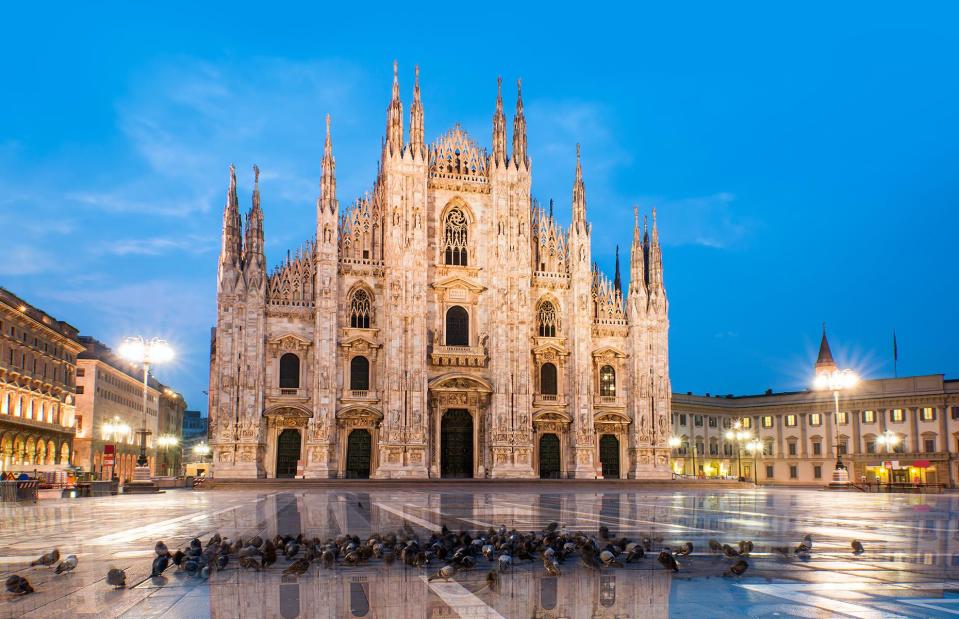
muratart/Shutterstock
The Duomo di Milano, with its marble-clad facade, is one of the most famous cathedrals in the world. The cathedral church, dedicated to the Nativity of St. Mary, took nearly six centuries to complete and is the largest church in Italy. Adorned with 135 spires and 2,245 statues, it sports one of the most extravagant Gothic exteriors in the world.
St. Paul's Cathedral, London, UK
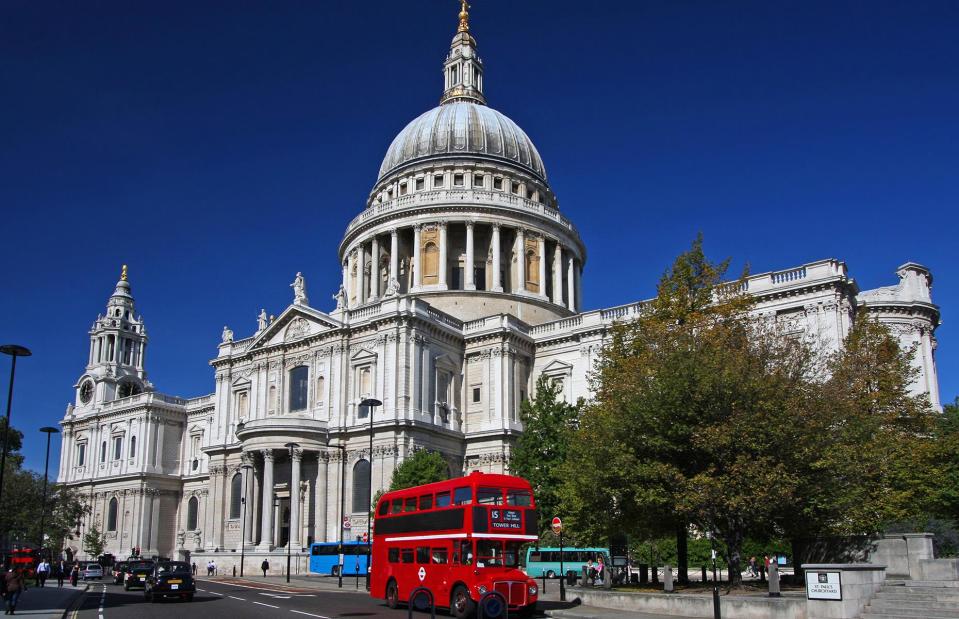
Dan Breckwoldt/Shutterstock
St. Paul's Cathedral, one of London's sightseeing highlights, stands on a site that has been a place of Christian worship for more than 1,400 years (and possibly pagan before that). An Anglican cathedral and the seat of the Bishop of London, the current St. Paul's building was completed in 1710, designed by Sir Christopher Wren after the previous cathedral was destroyed in the Great Fire of London in 1666. The cathedral has also been the site of several historic events, including Sir Winston Churchill's funeral, the peace services marking the end of both World Wars, and the wedding of Prince Charles and Lady Diana Spencer.
Kolner Dom, Cologne, Germany
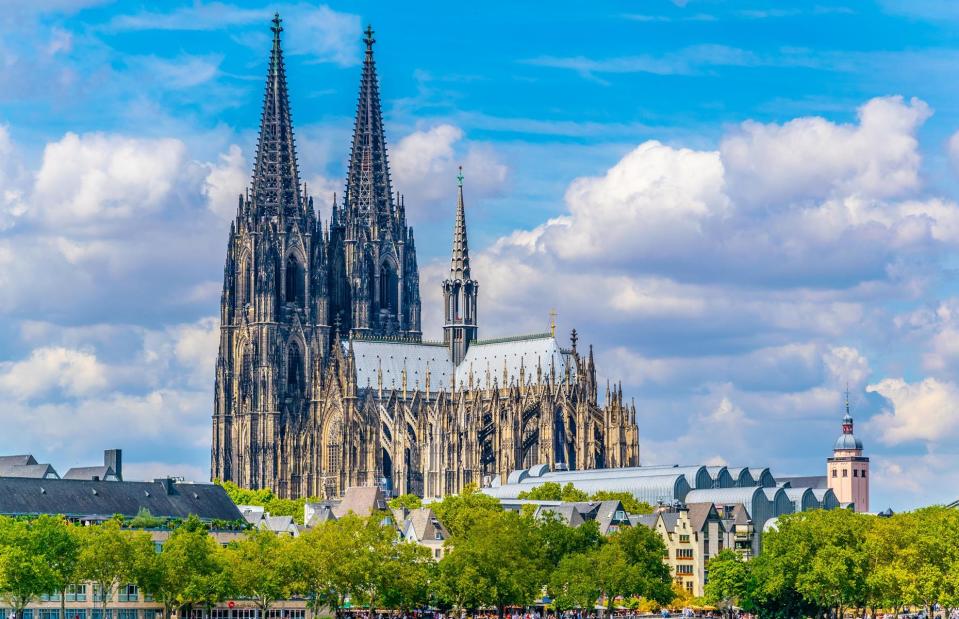
trabantos/Shutterstock
The German city's most famous sight, the Cologne Cathedral (Kolner Dom in German) is a symbol of German Catholicism and was declared a World Heritage Site in 1996. One of Germany's most visited landmarks, it is estimated to attract an average of 20,000 people a day, who come to admire its immense twin towers that stand 515 feet (157m) tall. Notably, the cathedral's choir stalls are among the largest of any medieval church.
St. Basil's Cathedral, Moscow, Russia
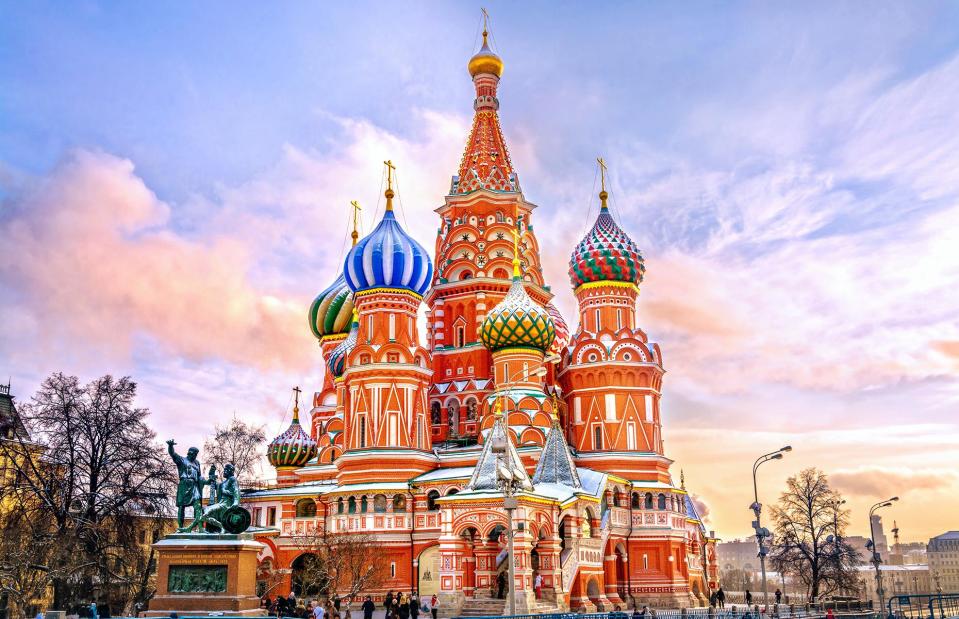
MarinaD_37/Shutterstock
One of the most colourful buildings in the world, the ornate St. Basil's Cathedral is one of Moscow's most recognisable landmarks. Located in Red Square, the cathedral's design was intended to resemble the flames of a bonfire. The church was confiscated from the Russian Orthodox Church and completely secularised in 1929 as part of the Soviet Union's doctrine of state atheism. It's since operated as a State Historical Museum but weekly Orthodox services were restored in 1997. Note that both the British Foreign & Commonwealth Office (FCO) and US Department of State warn against all travel to Russia at the moment.
St. Patrick's Cathedral, New York City, New York, USA
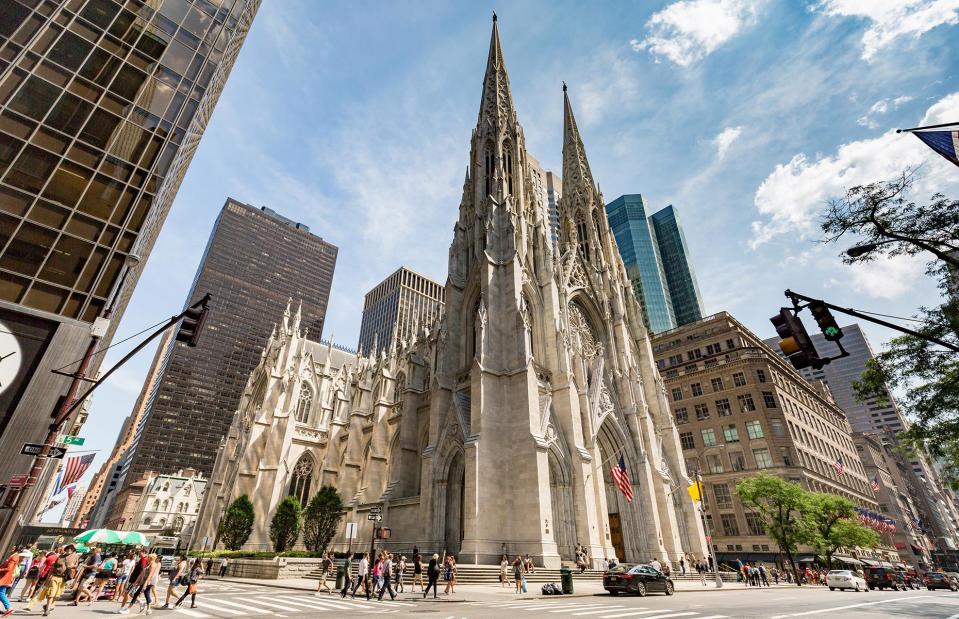
BorisVteshev/Shutterstock
An unusual building to find among the towering skyscrapers of Fifth Avenue, St. Patrick's Cathedral is the country's largest Neo-Gothic Roman Catholic cathedral. The cathedral was named after St. Patrick, the patron saint of Ireland, in response to the increasing number of Irish immigrants in the city during the second half of the 19th century. Today it's one of the most prominent landmarks in New York City and is at the centre of St. Patrick's Day celebrations every year.
Catedral de Santa María de la Sede, Seville, Spain
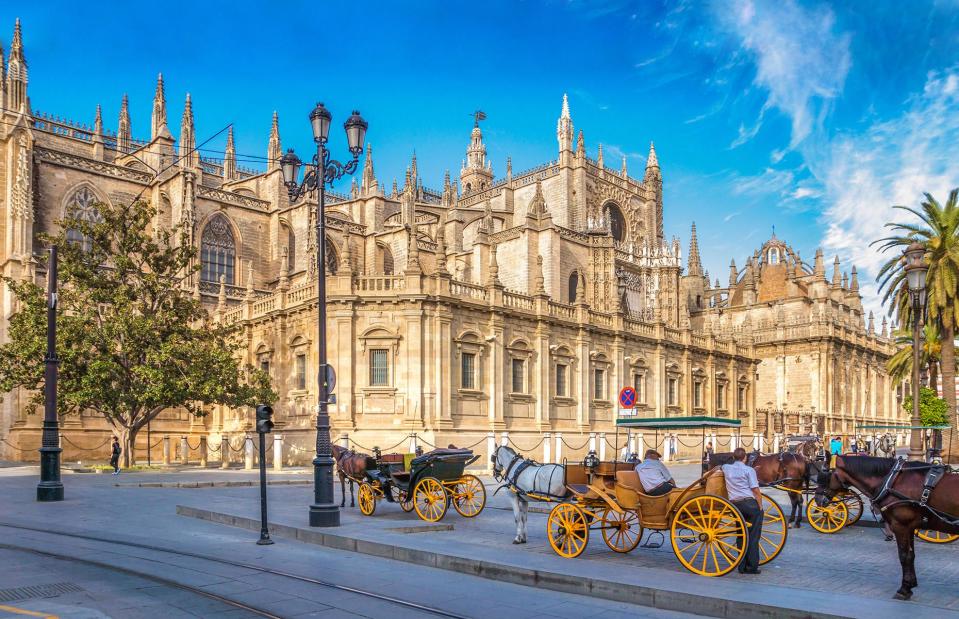
LaMiaFotografia/Shutterstock
The world's largest Gothic cathedral, Seville Cathedral is simply mind-boggling. Next to one of Seville's most popular attractions, the Alcazar palace complex, the cathedral was built on the site of a Moorish mosque – so some of the oldest parts of the cathedral, like the orange tree courtyard and the Giralda tower, date back to the late 12th century.
York Minster, York, UK
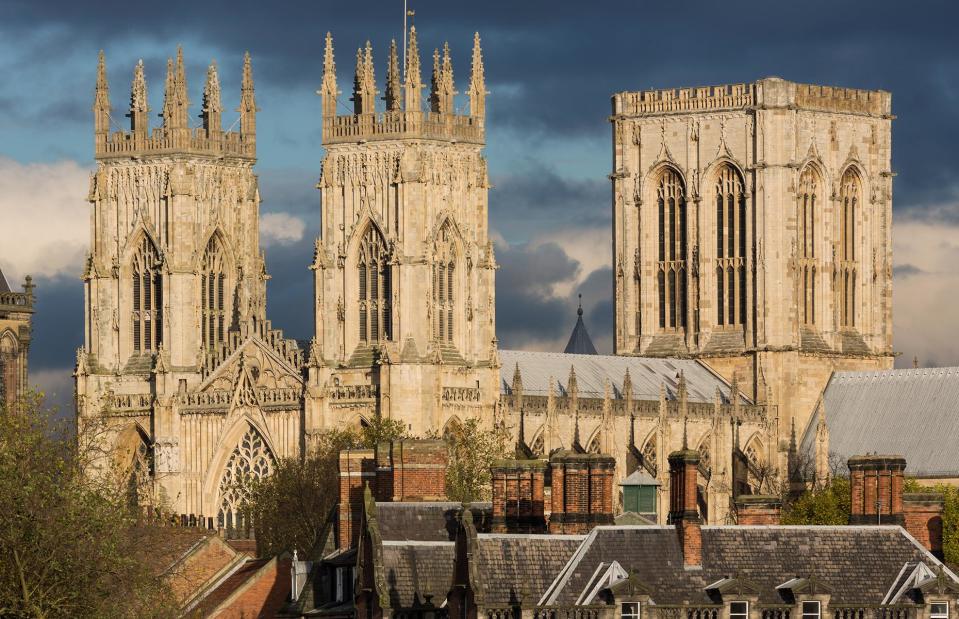
PhilMacDPhoto/Shutterstock
The Gothic York Minster rises high above the city of York in northeast England. Officially called the Cathedral and Metropolitical Church of Saint Peter in York, the cathedral is the seat of the Archbishop of York, the third-highest office of the Church of England. The cathedral is also notable for having the largest expanse of medieval stained glass in the country.
Berliner Dom, Berlin, Germany
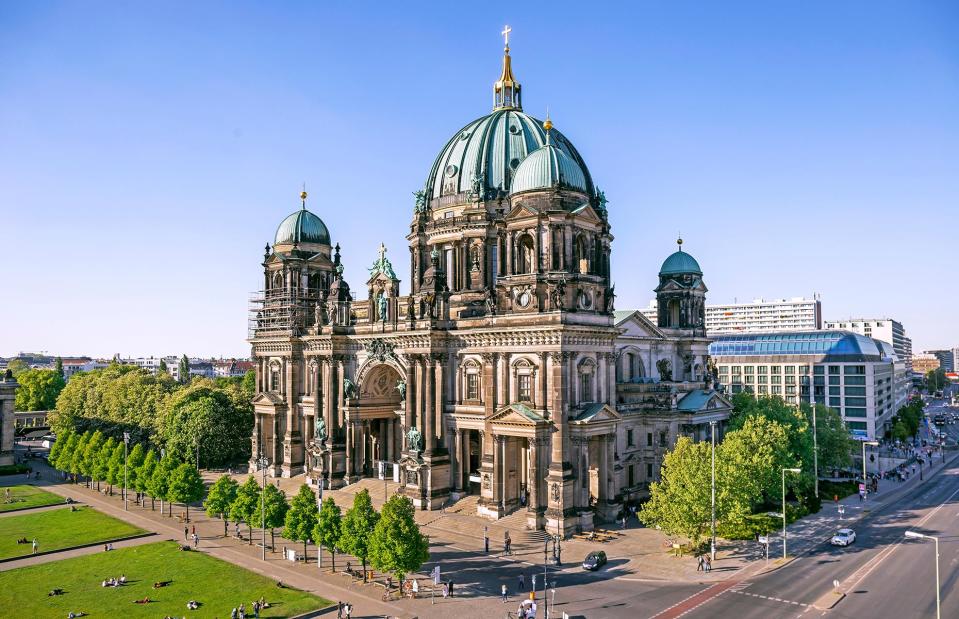
Mariia Golovianko/Shutterstock
Despite its name, Berlin Cathedral has never been an actual cathedral as it's never been the seat of a bishop, but it's still a stunner. The Neo-Renaissance building has four towers and an impressive dome topped with a golden cross. Located on Berlin's Museum Island, the church was finished in 1905 and houses not only a place of worship but a museum and concert hall too.
Mexico City Metropolitan Cathedral, Mexico City, Mexico

Aleksandar Todorovic/Shutterstock
One of Mexico City's most recognisable landmarks, the Mexico City Metropolitan Cathedral is both the largest and oldest cathedral in Latin America. An architectural masterpiece, the building is a unique mix of three styles – Baroque, Neo-Classic and Neo-Renaissance – reflecting the lengthy construction process. The cathedral was placed on the World Monuments Fund's list of endangered sites in 1998 due to accelerated sinking, and has since undergone extensive renovations to stabilise the structure.
St. Louis Cathedral, New Orleans, Louisiana, USA
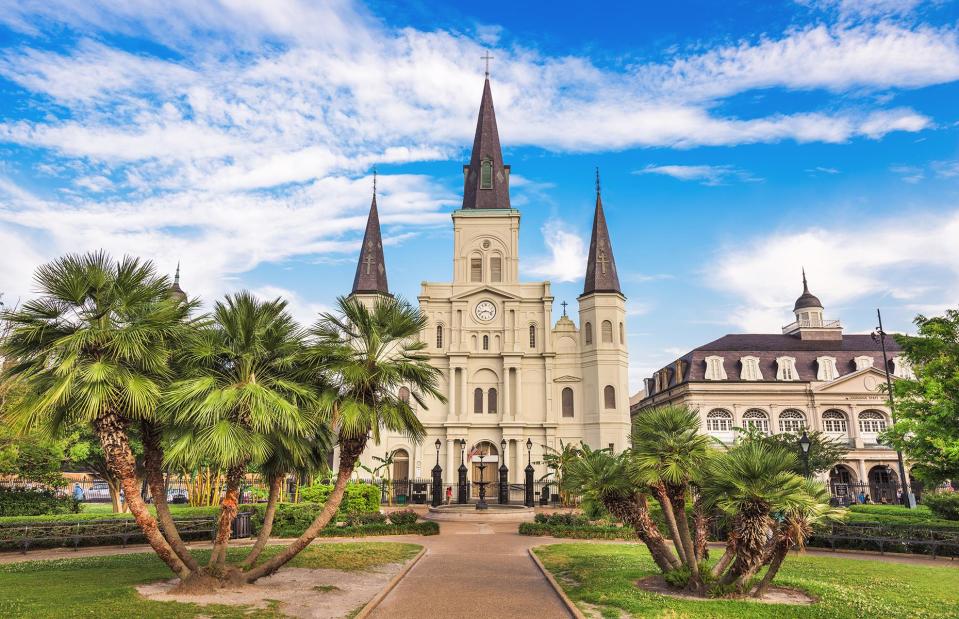
Sean Pavone/Shutterstock
The St. Louis Cathedral in New Orleans has been located on this site since 1794. However, due to extensive expansion and rebuilding work in 1850, little of the original church remains. It's the oldest Catholic cathedral in continual use in the United States and one of NOLA's most notable landmarks.
Cattedrale di Santa Maria del Fiore, Florence, Italy
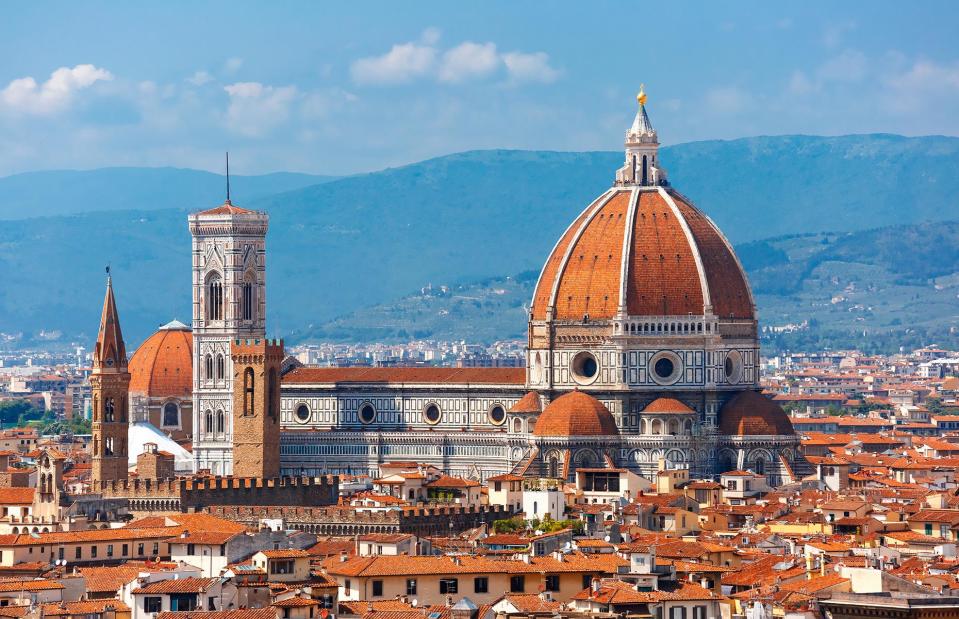
kavalenkava/Shutterstock
One of the most magnificent cathedrals in the world, the stunning marble facade of Santa Maria del Fiore is instantly recognisable. Located in Florence's Piazza del Duomo along with The Baptistery of St. John and Giotto's Bell Tower, the cathedral is one of the most famous in the world. One of its most notable features is Brunelleschi's Duomo – more than 500 years after completion it still remains the largest masonry dome in the world.
St. Vitus Cathedral, Prague, Czechia
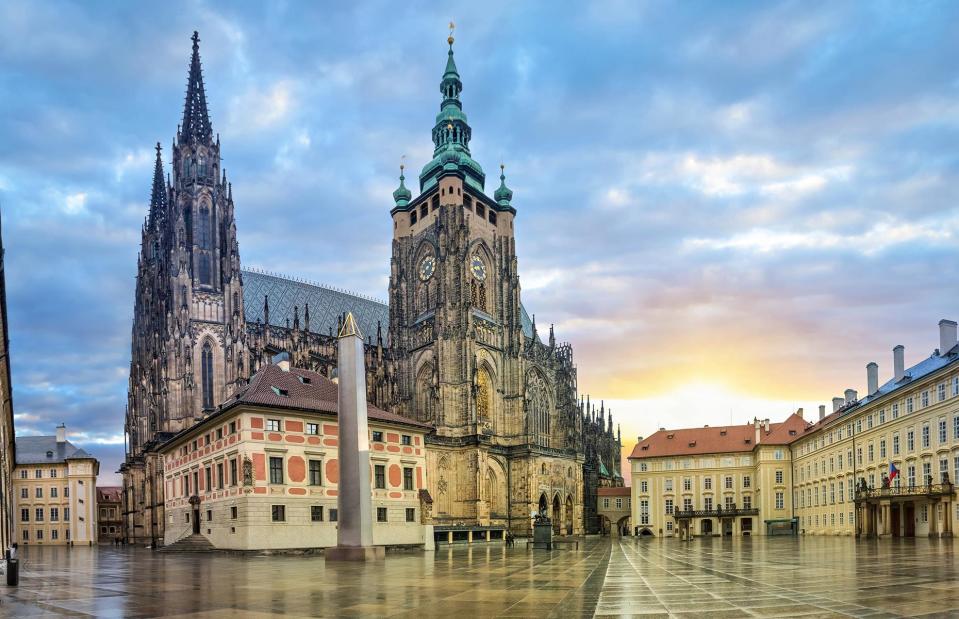
Sergey Dzyuba/Shutterstock
Situated within the Prague Castle complex, this towering cathedral is the seat of the Archbishop of Prague. Although the cathedral's formal title is very lengthy, dedicated to St. Vitus, St. Wenceslaus and St. Adalbert, it's more commonly known as St. Vitus Cathedral. A prominent example of Gothic architecture, it's the largest and most important church in the country, and contains the tombs of many Bohemian kings and Holy Roman Emperors.
Cathedral of Brasília, Brasília, Brazil

Nick Photoworld/Shutterstock
Designed by Brazilian architect Oscar Niemeyer and dedicated in 1970, the Cathedral of Brasília in the Brazilian capital is visited by around a million people every day. The cathedral's shape represents hands moving upwards to heaven and surprisingly, most of the structure is actually below ground with only the 230-foot (70m) roof visible above ground.
Cathedral of Our Lady of the Angels, Los Angeles, California, USA
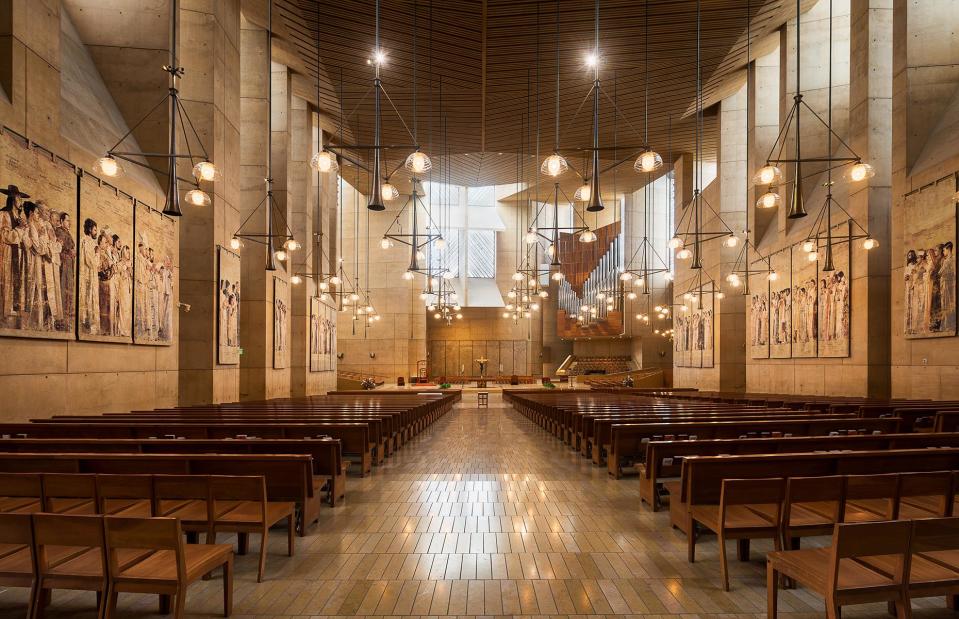
Nagel Photography/Shutterstock
Also known as COLA, the Cathedral of Our Lady of the Angels replaced the previous Cathedral of Saint Vibiana which was severely damaged in the 1994 Northridge earthquake. The new building opened in 2002 and sparked controversy for its large size, non-traditional architecture and expensive construction – the altar budget alone was £3.9 million ($5m).
Basilica San Marco, Venice, Italy
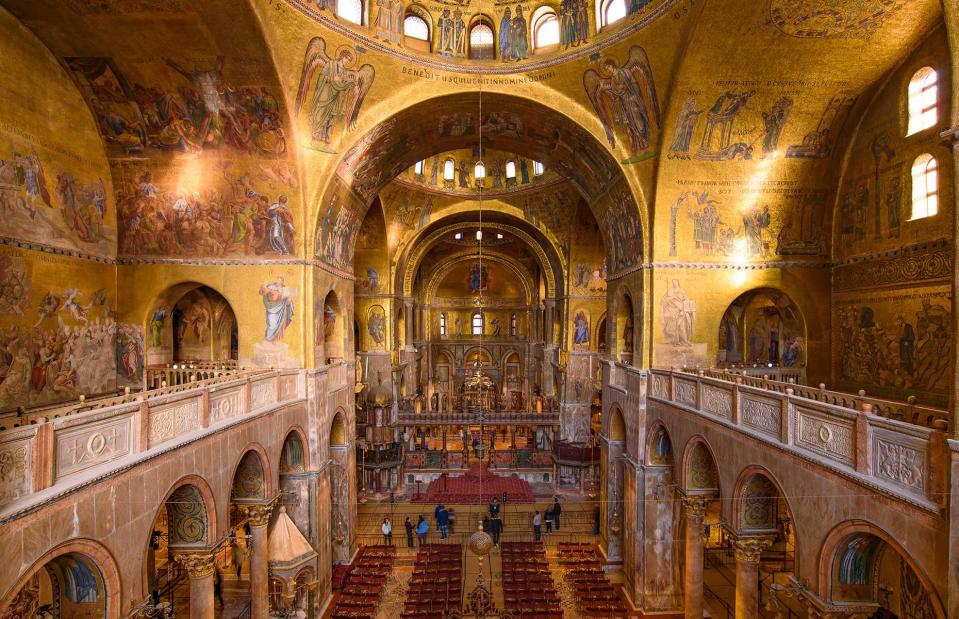
Mo Wu/Shutterstock
One of the most lavishly decorated churches in the world, St. Mark's Basilica in Venice's Piazza San Marco is the seat of the Roman Catholic Archdiocese of Venice. It's an exceptional example of Byzantine architecture, reflecting Venice's past as an international trading centre. Rebuilt after a fire in 932, the basilica is best defined by its protruding domes, marble-clad walls and gold-leaf mosaics.
Catedral de Santiago de Compostela, Santiago, Spain
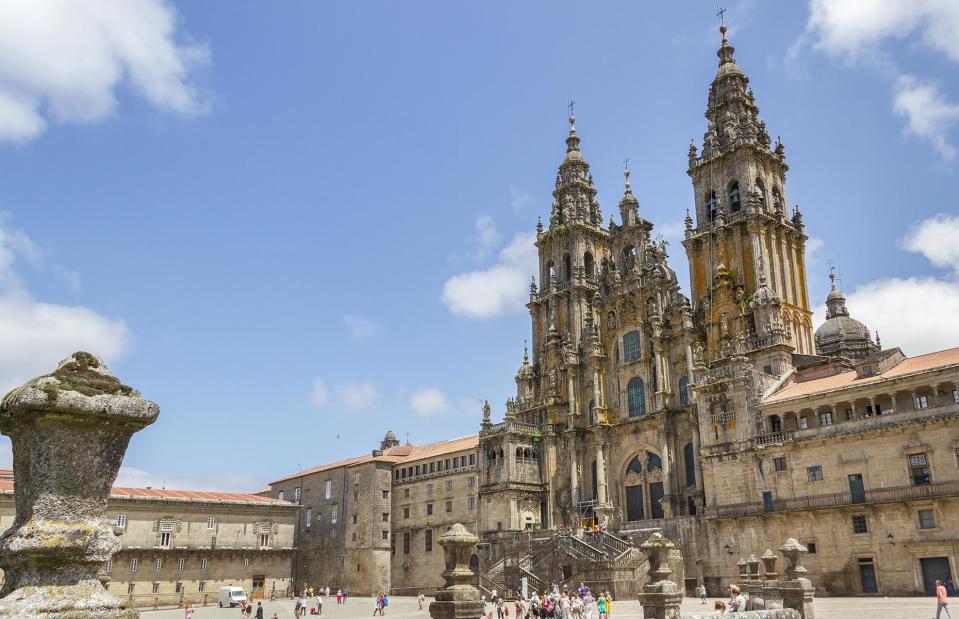
arousa/Shutterstock
The grand finale marking the end of the Camino de Santiago pilgrimage route, the Cathedral of Santiago de Compostela is a striking landmark on the city's skyline. It was built over several centuries and completed in 1211. As such, it's a mix of mostly Romanesque architecture, with several Gothic and Baroque additions.
Domkirche St. Stephan, Vienna, Austria
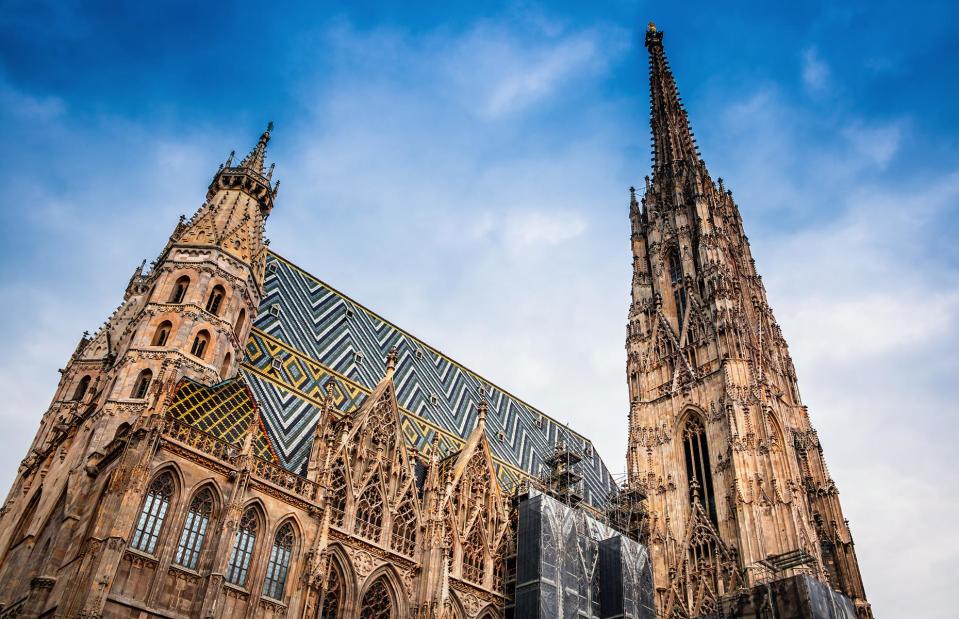
Maryna Stamatova/Shutterstock
One of Vienna's most culturally significant landmarks, St. Stephen's Cathedral is particularly notable for its colourful roof. Made up of 23,000 individual tiles, it features a depiction of an Imperial double-headed eagle, the emblem of the Holy Roman Empire and later the Austrian Empire. The cathedral has hosted several important events in Habsburg and Austrian history, including the wedding of Mozart and Constanze Weber, and funerals of Antonio Vivaldi and F1 champion Niki Lauda.
St. Sophia's Cathedral, Kiev, Ukraine
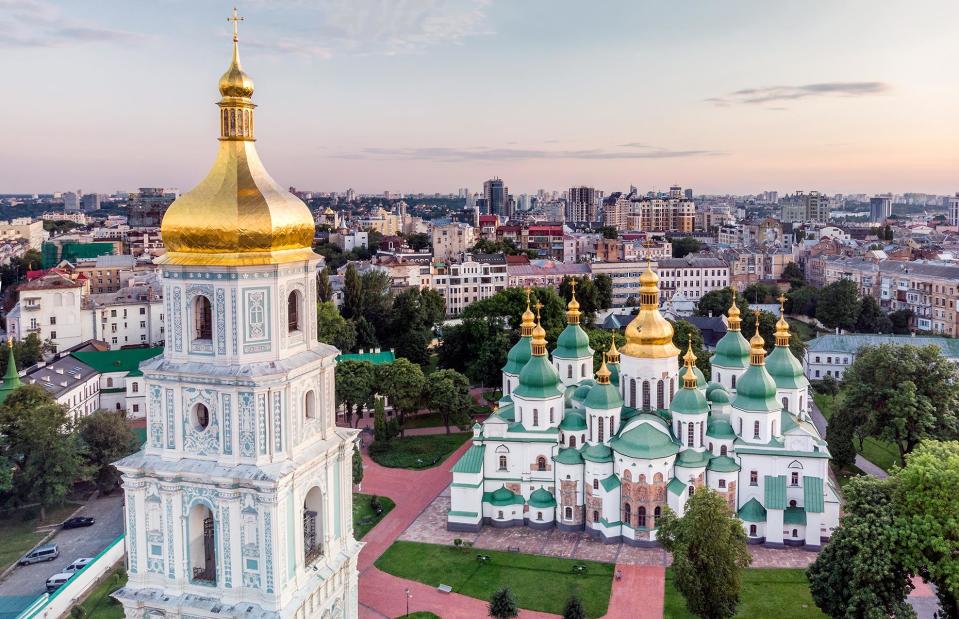
Ruslan Kalnitsky/Shutterstock
The first heritage site in Ukraine to be inscribed on the World Heritage List along with the Kiev Cave Monastery complex, St. Sophia's Cathedral is one of the most recognisable landmarks in Kiev. Its foundations were laid in the early 11th century and its name comes from Istanbul's Hagia Sophia. Since the late 1980s there have been promises to return the building to the Orthodox Church but due to disagreements, the cathedral remains a secular museum. Note that both the British FCO and US Department of State warn against all travel to Ukraine at the moment.
Cathedral of the Assumption of the Virgin, Tashkent, Uzbekistan
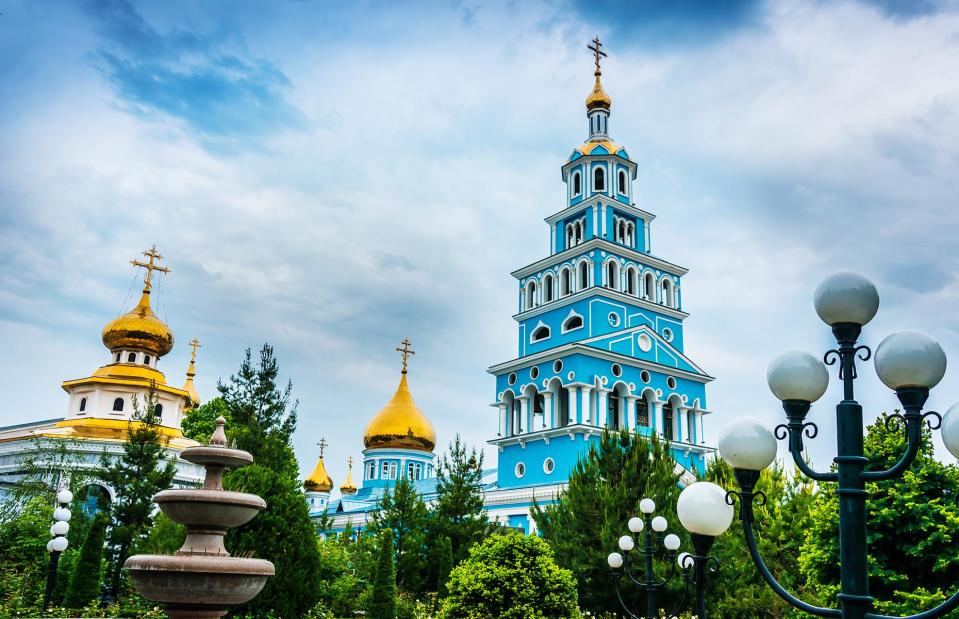
monticello/Shutterstock
The golden domes and bright blue walls of the Cathedral of the Assumption of the Virgin are pretty hard to miss. A Russian Orthodox cathedral built in the 1800s in Tashkent, Uzbekistan, it was closed for worship in the 1930s like all of the key churches in Central Asia. The church was later restored and reopened and then redecorated again in 1996 to celebrate the visit of Patriarch Alexis II, the 15th head of the Russian Orthodox Church.
Salisbury Cathedral, Salisbury, UK
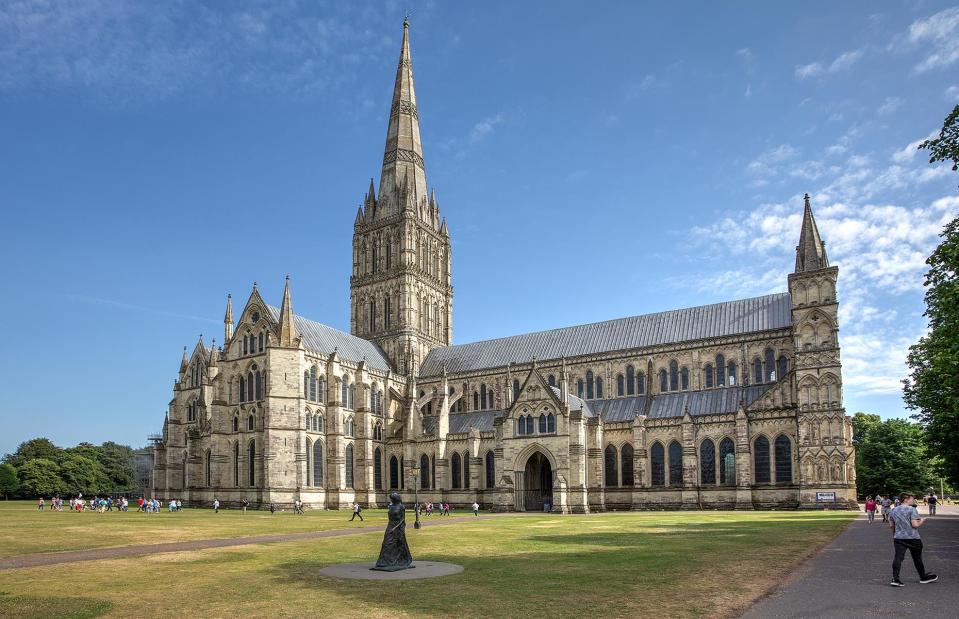
Christopher Hotton/Shutterstock
An Anglican cathedral southwestern England, Salisbury Cathedral is a stunning example of Early English Gothic architecture. Completed in 1258, the cathedral has the tallest church spire in the UK, rising to 404 feet (123m). The cathedral is also famous for housing the best-preserved version of only four surviving copies of the Magna Carta, the United Kingdom's charter of rights.
Notre-Dame Cathedral Basilica of Saigon, Ho Chi Minh City, Vietnam
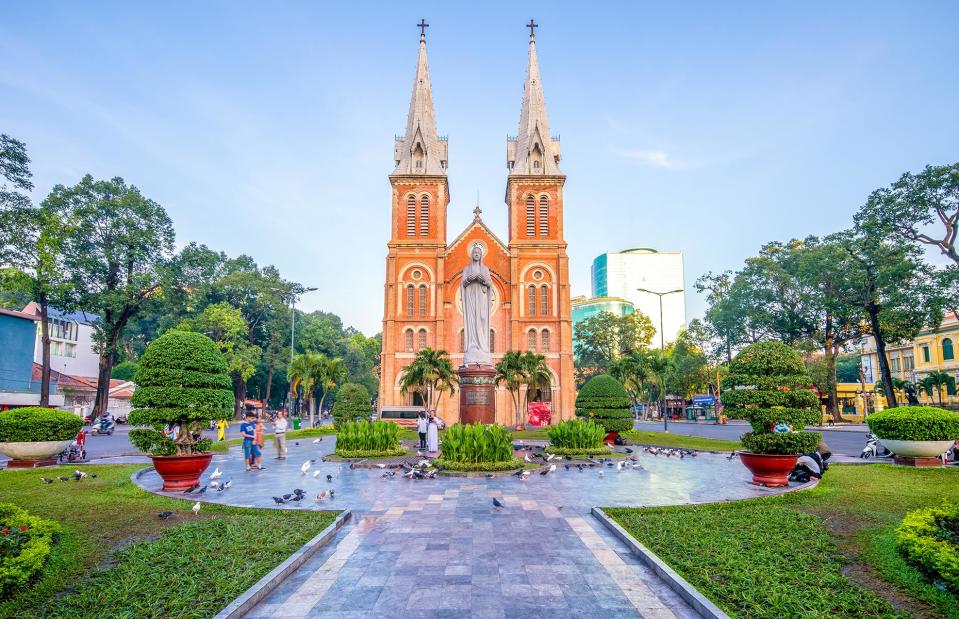
Richie Chan/Shutterstock
Built in the late 1880s following the French conquest of Cochinchina and Saigon (Ho Chi Minh City's previous name), the Saigon Notre-Dame Cathedral is one of the last remaining Catholic churches in the largely Buddhist Vietnam. The cathedral received a lot of attention in October 2005 when a statue of the Virgin Mary was reported to have shed tears, attracting thousands of visitors.
Nidarosdomen, Trondheim, Norway
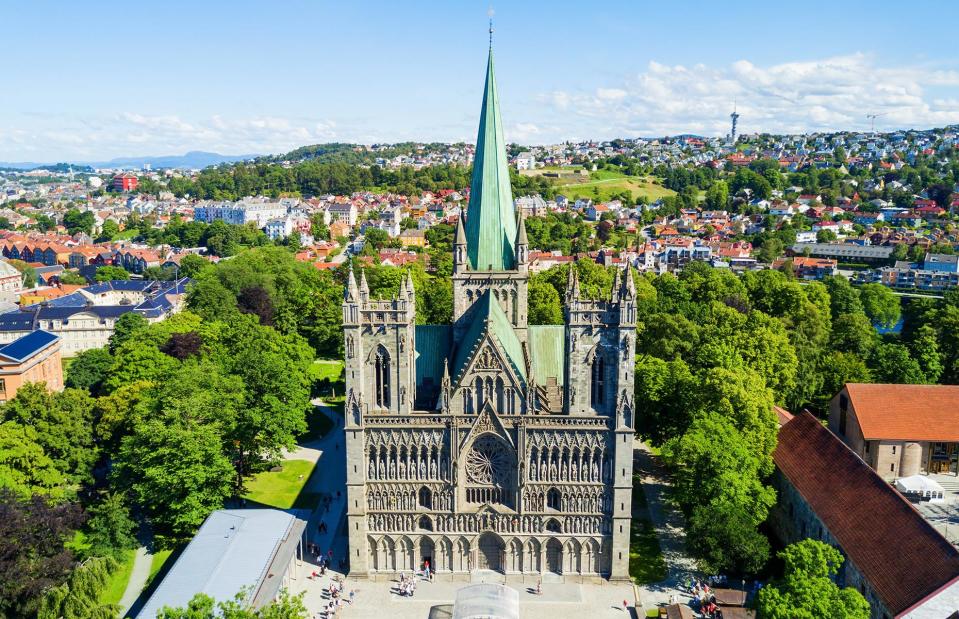
saiko3p/Shutterstock
Nidarosdomen, or Nidaros Cathedral, was built over the burial site of King Olav II who became the patron saint of Norway. Although finished in 1300, additions and renovations have taken place throughout history with the most recent works completed in 2001. The building in the city of Trondheim is the northernmost medieval cathedral in the world.
Cathedrale Notre-Dame de Chartres, Chartres, France
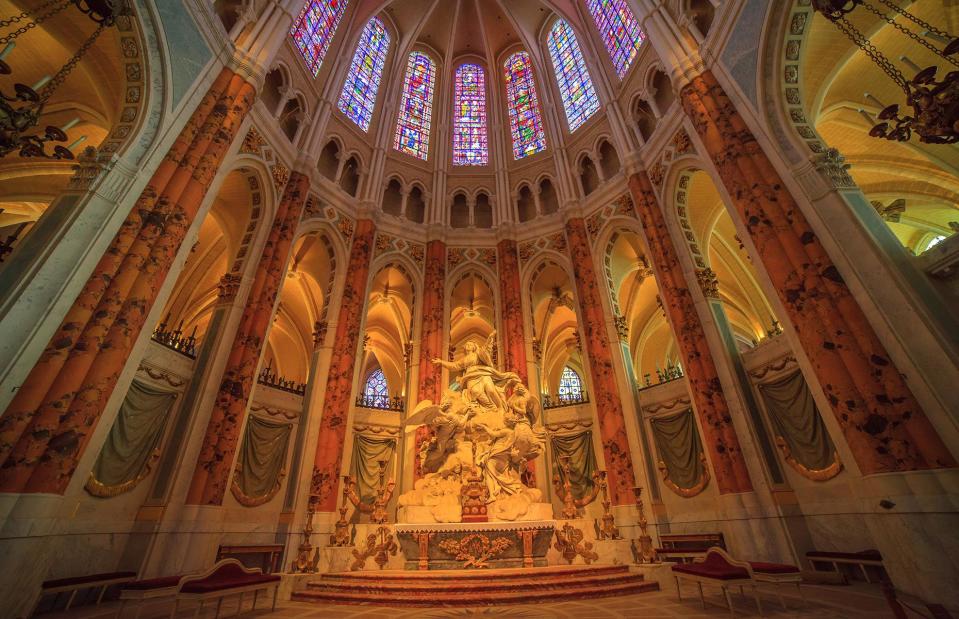
andre quinou/Shutterstock
One of the most important churches in France, the Chartres Cathedral is one of the best-preserved churches in the world. The majority of the stained-glass windows are original while the architecture has only seen the most minor changes since the early 13th century. It's also one of the most visited religious sites in France with travellers coming to admire its French Gothic art and its most famous relic, the Sancta Camisa, said to be the tunic worn by Virgin Mary during Christ's birth.
Hagia Sophia, Istanbul, Turkey
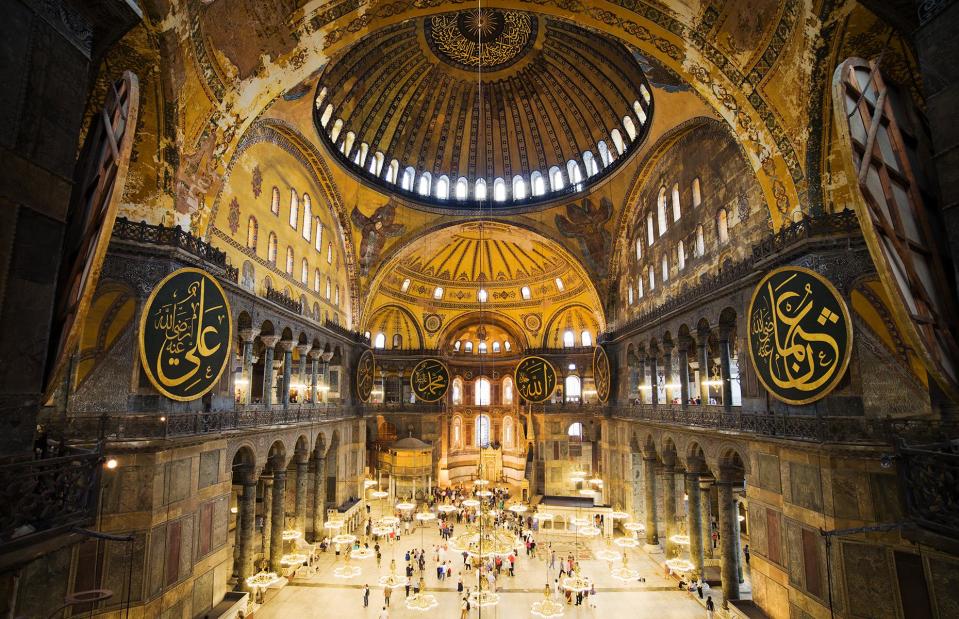
Artur Bogacki/Shutterstock
One of the most fascinating religious buildings in the world, Istanbul's Hagia Sophia is both a former Greek Orthodox patriarchal cathedral and an Ottoman imperial mosque, and now a museum. Built in AD 537, it was the world's largest building and an engineering marvel of its time. After Constantinople (what Istanbul was called) was conquered by the Ottomans in the 15th century, it became the principal mosque of the city until it was turned into a museum in 1935.
St. Alexander Nevsky Cathedral, Sofia, Bulgaria
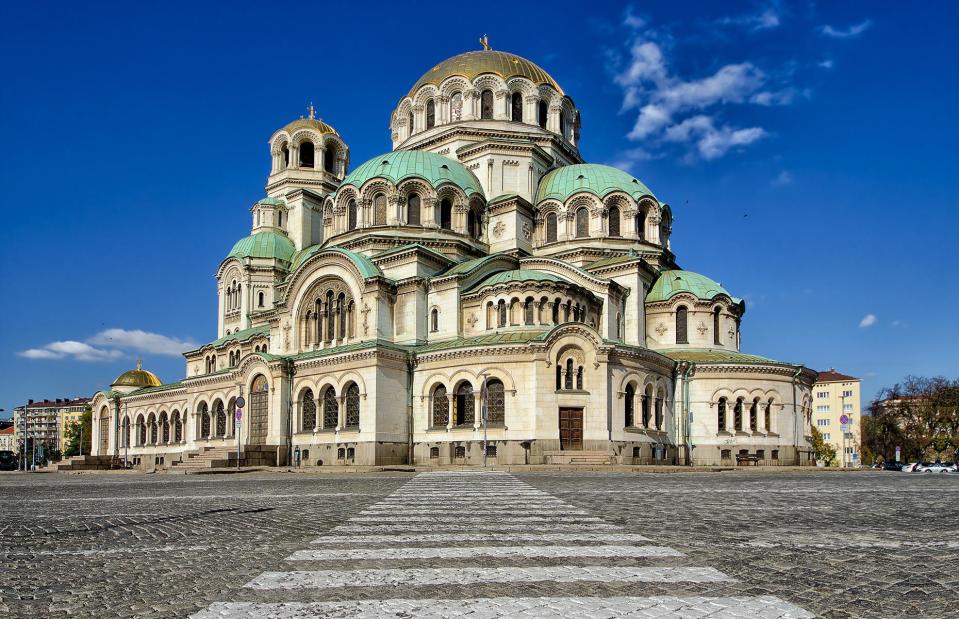
Anton Donev/Shutterstock
A symbol of the Bulgarian capital as well as a major tourist attraction, the St. Alexander Nevsky Cathedral is one of the largest Eastern Orthodox churches in the world. With several domes, including a gold-plated central dome, it was finished in 1912 and was built to honour the Russian soldiers who died during the Russo-Turkish War of 1877–1878, which helped liberate Bulgaria from Ottoman rule.
Metropolitan Cathedral of Rio de Janeiro, Rio de Janeiro, Brazil
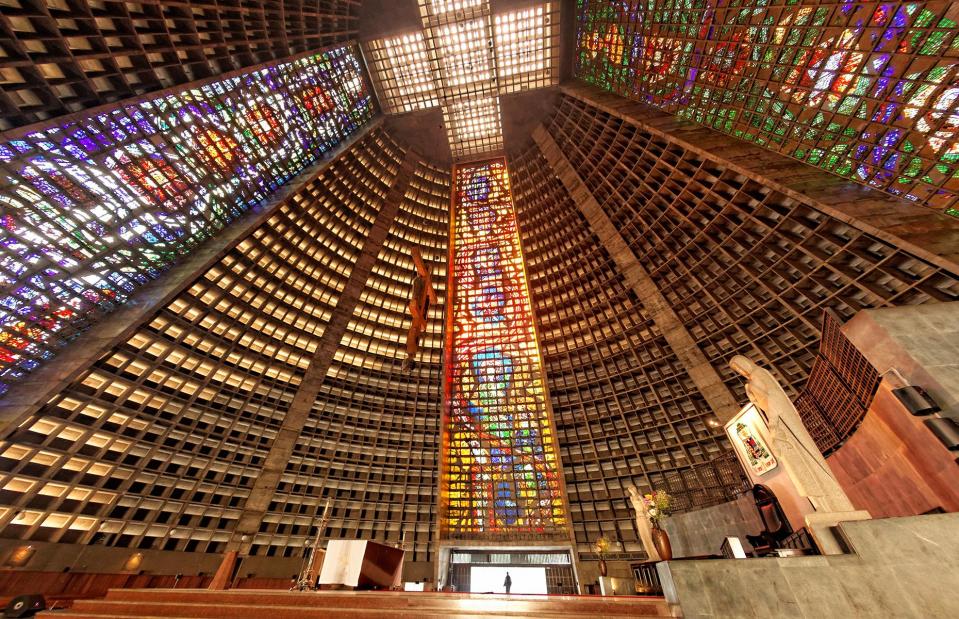
wideweb/Shutterstock
One of the most unique looking cathedrals in the world, the Metropolitan Cathedral of Rio de Janeiro is dedicated to the city's patron saint, Saint Sebastian. Completed in 1979 and inspired by ancient Mayan pyramid architecture, the cathedral is 246 feet (75m) high and can hold 20,000 people. Inside, look up at its central cross. Due to the dimmed lighting inside, the wires that are used to hang the cross aren't visible so it appears to be floating mid-air.
Catedral-Basílica de Santa María de Mallorca, Palma de Mallorca, Spain
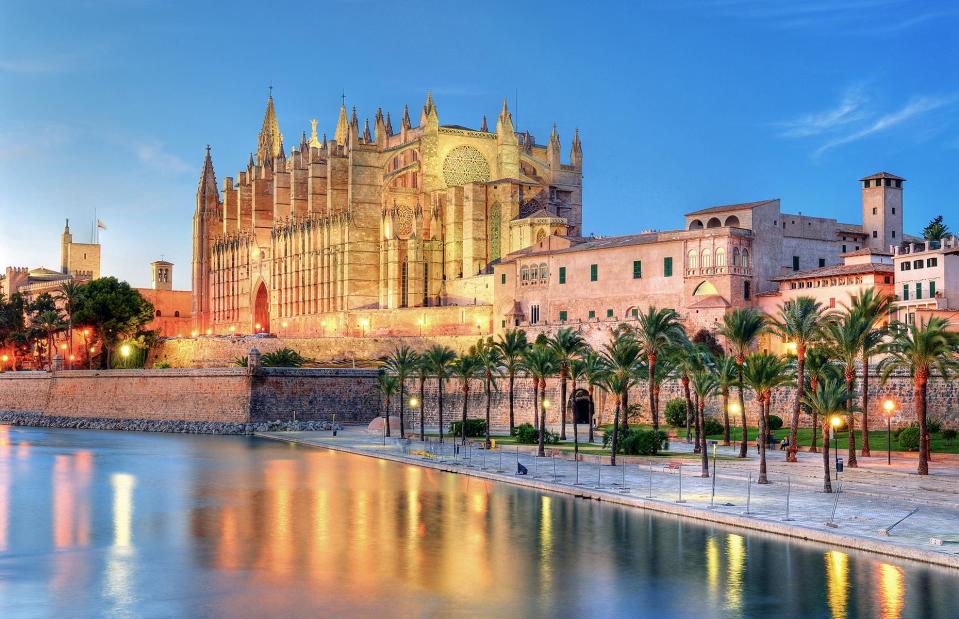
osmera.com/Shutterstock
Monumental in size, the Palma Cathedral is one of Palma de Mallorca's main attractions. A total of 61 stained glass windows shine light onto its central nave and some of the interior features were designed by Antoni Gaudí. In 2007, renowned Mallorcan artist Miquel Barcelo added a contemporary art installation depicting a New Testament parable to one of the chapels.
Burgos Cathedral, Burgos, Spain
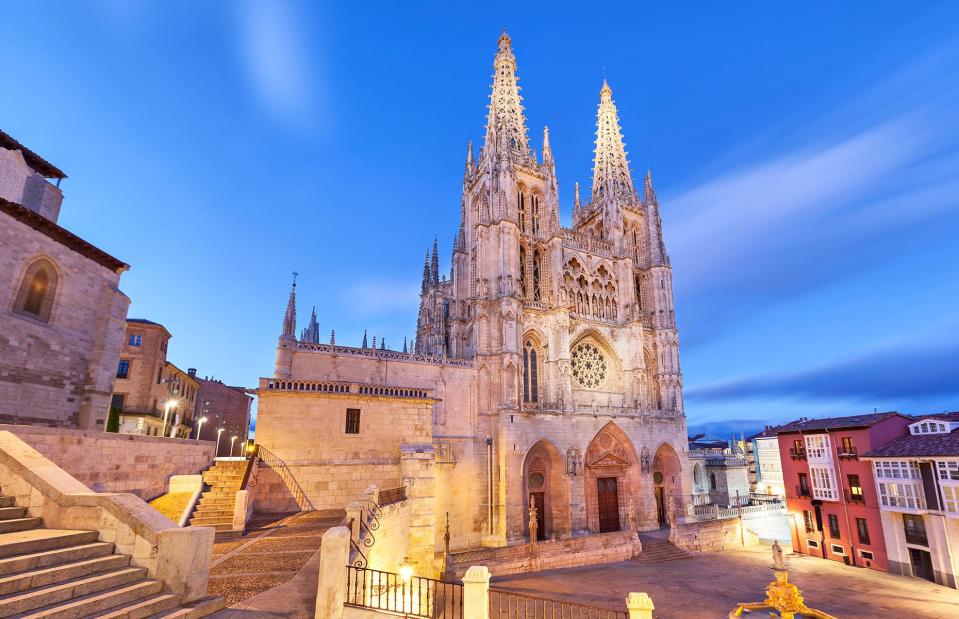
Sergey Dzyuba/Shutterstock
Located in Burgos in northern Spain, the Burgos Cathedral is the only Spanish cathedral that's been declared a World Heritage Site without being a part of a city's historic centre or in union with other buildings. A typical French Gothic cathedral, it's more similar to the cathedrals of Paris and Reims. It also houses a large number of artworks by notable Spanish artists, mostly sculptors and painters.
Cathedrale Notre-Dame de Paris, Paris, France
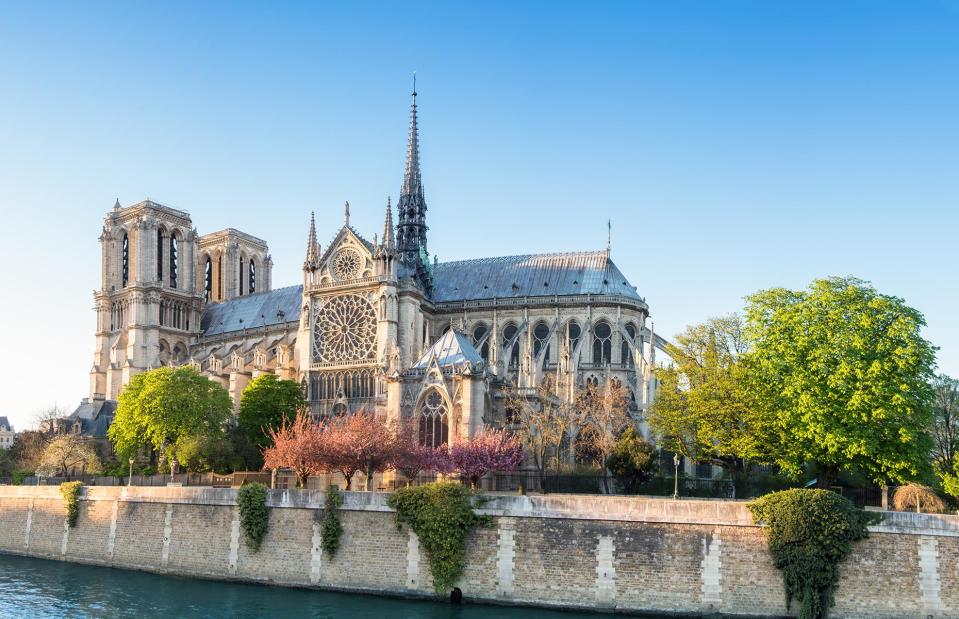
anyaivanova/Shutterstock
One of the world's finest examples of French Gothic architecture, the iconic Notre-Dame de Paris suffered a devastating fire in April 2019 that destroyed large portions, including the historic timber spire over the crossing. Following the fire, proposals were made to modernise the cathedral's design but in July 2020, it was announced that the roof and spire were to be rebuilt exactly as they were before the fire.
Notre-Dame Cathedral Basilica, Ottawa, Canada
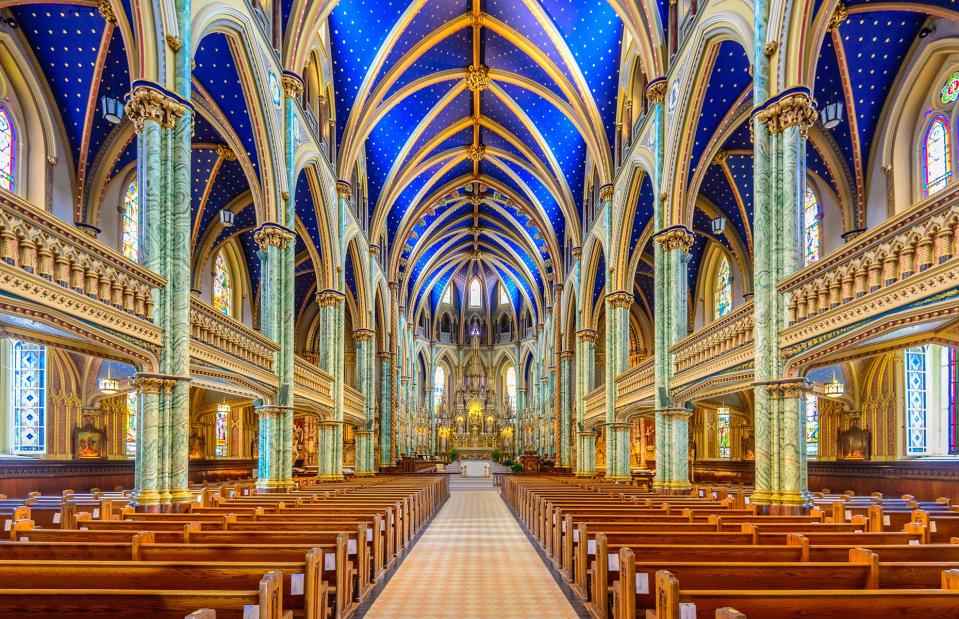
karamysh/Shutterstock
The oldest and largest church in Ottawa, the Notre-Dame Cathedral Basilica was originally a small wooden church built in 1832. The current building was finished in 1885, and renovated and restored in the late 1990s. Although rather modest on the outside, it's breathtakingly beautiful inside. The interior is brightly painted and decorated with carved features, ornate stained-glass windows and hundreds of statues.
Now discover haunting photos of the world's abandoned sacred places


